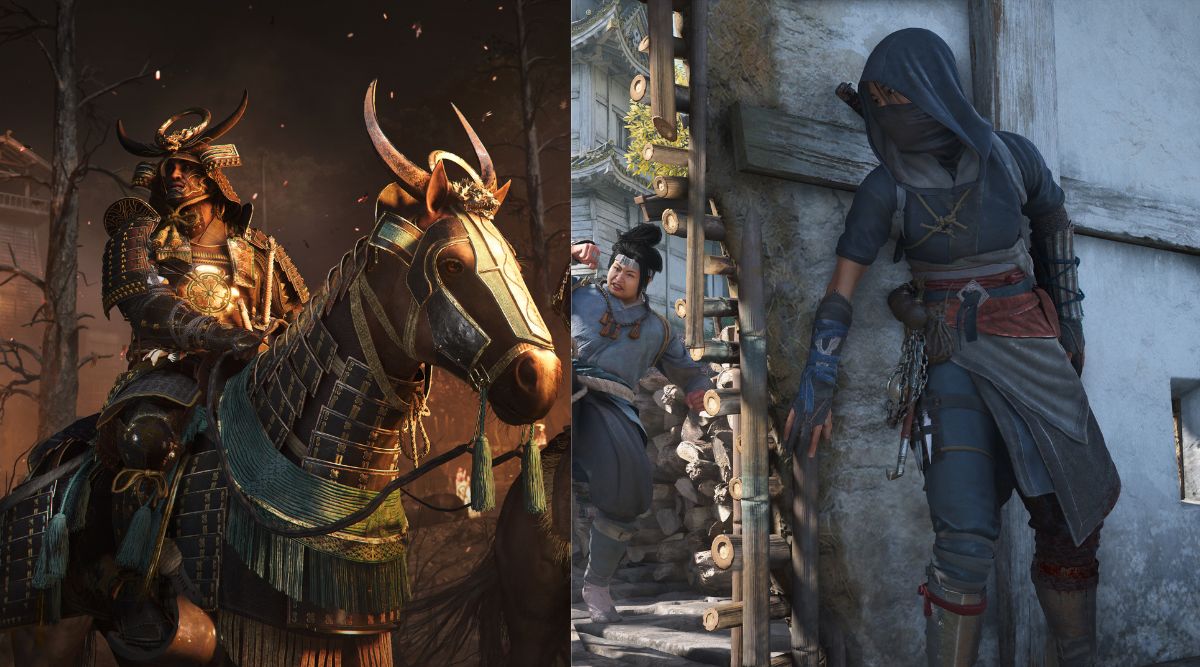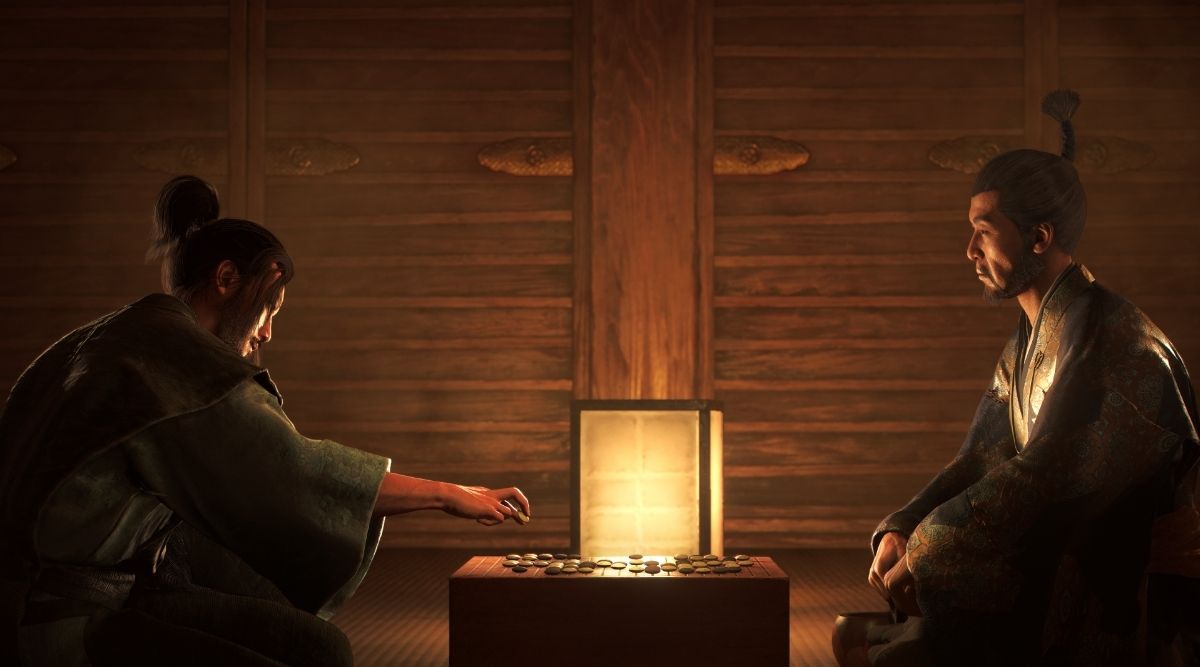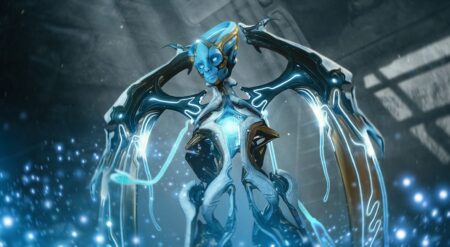Assassin’s Creed fans have long clamored for an entry set in feudal Japan, and finally, that game has arrived with Assassin’s Creed Shadows. Set during the late 1500s during the brutal Japanese unification campaign of Oda Nobunaga, the game features dual protagonists, Naoe and Yasuke. Naoe is a shinobi who favors stealth and has a mysterious connection to the Order of the Assassins. Yasuke first arrived in Japan, enslaved by Portuguese missionaries, before becoming a powerful samurai.
The lives of the two characters eventually become intertwined as dark forces plot against their families and lords. During the sliver of Assassin’s Creed Shadows I played during this preview, I switched back and forth between each character as they unraveled a plot by the daimyō Ukita Naoie against our employer, the daimyō Kuroda Yoshitaka. But this only comprises a tiny portion of the characters, map, plot, and gameplay in store for this open-world RPG.
Assassin’s Creed Shadows nails the dual protagonists.

The beginning of Assassin’s Creed Shadows walks players through each of Naoe and Yasuke’s playstyles so that by the time things open up, and you can switch between who you play as at any time, it’s clear that these are two very different characters with very different advantages and disadvantages. Most simply, you can boil the two characters down to Naoe is for stealth and Yasuke is for combat. Thanks to their clear distinction in skill sets, it truly feels like you can viably choose to play with either a stealth or combat-forward style for the first time in a long time.
Yasuke is a tank compared to Naoe. He hits harder and lasts longer against more enemies, can run straight through certain walls and doors, and is always the right choice for a player or mission that requires open arms. He can do the series’ signature parkour moves, but barely. He moves very slowly as he climbs or walks on tight ledges.
Meanwhile, Naoe can sneak around with ease, especially thanks to a number of new stealth mechanics. Most notably, Naoe sports a new grappling hook to latch onto ledges above instantly and can go prone to crawl around to stay hidden. There’s also a new emphasis on light and darkness. It’s harder to be spotted by enemies when it’s darker, and appropriately, you can put out nearby candles with the press of a button. Naoe also has the series’ famous Eagle Vision power, which lets players see enemies through walls at will.
At the same time, Naoe is just not as proficient at combat as Yasuke is. Her attacks are weaker, and her health is lower, which means that if you begin a mission sneaking around and find yourself caught by the enemy, it may be a safer bet to cut and run than to try and face them. While Assassin’s Creed Shadows features the same parry, block, dodge, light attack, heavy attack, and special attack configuration as each open-world entry in the series since Origins, it’s harder to simply hack and slash your way through enemies than ever.
Combat feels markedly more precise, while stealth feels more viable as a play style than it has in a long time.

Most enemy types will easily block regular attacks, and the window for parrying or dodging on standard game settings is slim. And even when you succeed, you need to go through a lot of cycles to defeat an enemy while probably facing 3 to 5 at a time. A new multi-attack system where an enemy’s weapons light up blue when they are going to chain attacks also means that the rhythm of enemy attacks is irregular and harder to predict.
That said, it’s possible that during this Assassin’s Creed Shadows preview, my characters were underpowered compared to what level or gear they might have if I had played up to that point naturally. There was no time to explore the leveling system or the myriad weapons and armor in much depth during the preview period. But as a player who has sunk well over six or seven hundred hours into modern Assassin’s Creed games with similar combat mechanics, the combat does feel more refined and complicated than ever.
Thankfully, there are some in-game challenges throughout the map that can help you learn different combos of light, heavy, and parry attacks to spice up an otherwise somewhat repetitive cycle. You can also switch between Yasuke and Naoe at any time with the press of a button while in the open world. However, during key missions, you must choose to lock into one character or the other. It’s as exciting to choose whether to prioritize stealth or combat based on what the scenario feels like it is going to require as it is being surprised when things take a turn mid-mission.
This means that it’s important to beef up your skills playing with both characters and making sure they’re properly leveled and geared in case your predictions go awry. Throughout most cutscenes, you will also be prompted to make dialogue choices that, at the least, significantly impact the direction of the conversation.
The developers emphasized that player choice is as important to Assassin’s Creed Shadows as ever, but it’s unclear from the brief play period whether dialogue choices might dramatically alter the outcome of the story or not. Fortunately, if you’re worried about making the wrong choice, there is a “Canon Mode” that selects the “correct” dialogue for you to experience the official version of every decision.
The world of Assassin’s Creed Shadows is as beautiful and enthralling as ever.

During the preview period, I only saw a tiny portion of a large map stretching across central Japan. The play period was focused on Himeji, its castle, and the nearby port of Aga. But from just these environments alone, it’s clear that the game is filled with gorgeous and diverse environments. Plus, they can be experienced during all four seasons with the press of a button. I played during the spring and was graced with beautiful blossoming flowers, wildlife and wildflowers everywhere, and a whole ocean filled with intriguing ships I hope are explorable later in the game.
Like the previous large-scale entry in the series, Assassin’s Creed Valhalla, Shadows takes a nonlinear approach to gameplay. Players will have multiple objectives at a time, designed seemingly most similarly to Assassin’s Creed Mirage to scaffold on top of each other like an unfolding mystery. To really amplify the mystery, Assassin’s Creed Shadows conceals the locations of its objectives completely. In previous entries, players could choose to play with settings where objectives are always revealed right away or only general locations are provided with hints.
Here, exploring is the only option. Well, that or bribing NPCs for information or sending scouts to uncover hints for you. If the objective location hints stump you or you just don’t enjoy scouring the map for possible hotspots, there are at least ways around it. While I’ve always played recent Assassin’s Creed games in this exploratory mode, having no option to automatically locate the next objective without taking other sidesteps first is a little concerning.
But, at the same time, the prospect of having to truly explore this lush world is exciting. From the small portion of the world I encountered, there seem to be side tasks, collectibles, and interested NPCs all around. I’m still left in the shadows about what the game’s main plot fully entails, how the Assassins and Templars play into it, or what the new base-building element of the game will be like since none of that was revealed or playable during my preview. But if this small area is any indicator, there will be no shortage of things to do and places to explore across Assassin’s Creed Shadows’s vast world.
From just a single mission and a small sliver of the map, Assassin’s Creed Shadows promises to be an excellent entry in the series’ open-world RPG iterations. The story feels as complex as its central characters and their lived experiences. The endless fight between free will and determinism rages on between opposing forces from across Japan and beyond its shores. At the heart of it will be two distinct and equally engaging character archetypes.
Assassin’s Creed Shadows releases on Xbox Series S|X, PlayStation 5, Amazon Luna, Mac, and PC on March 20th.







